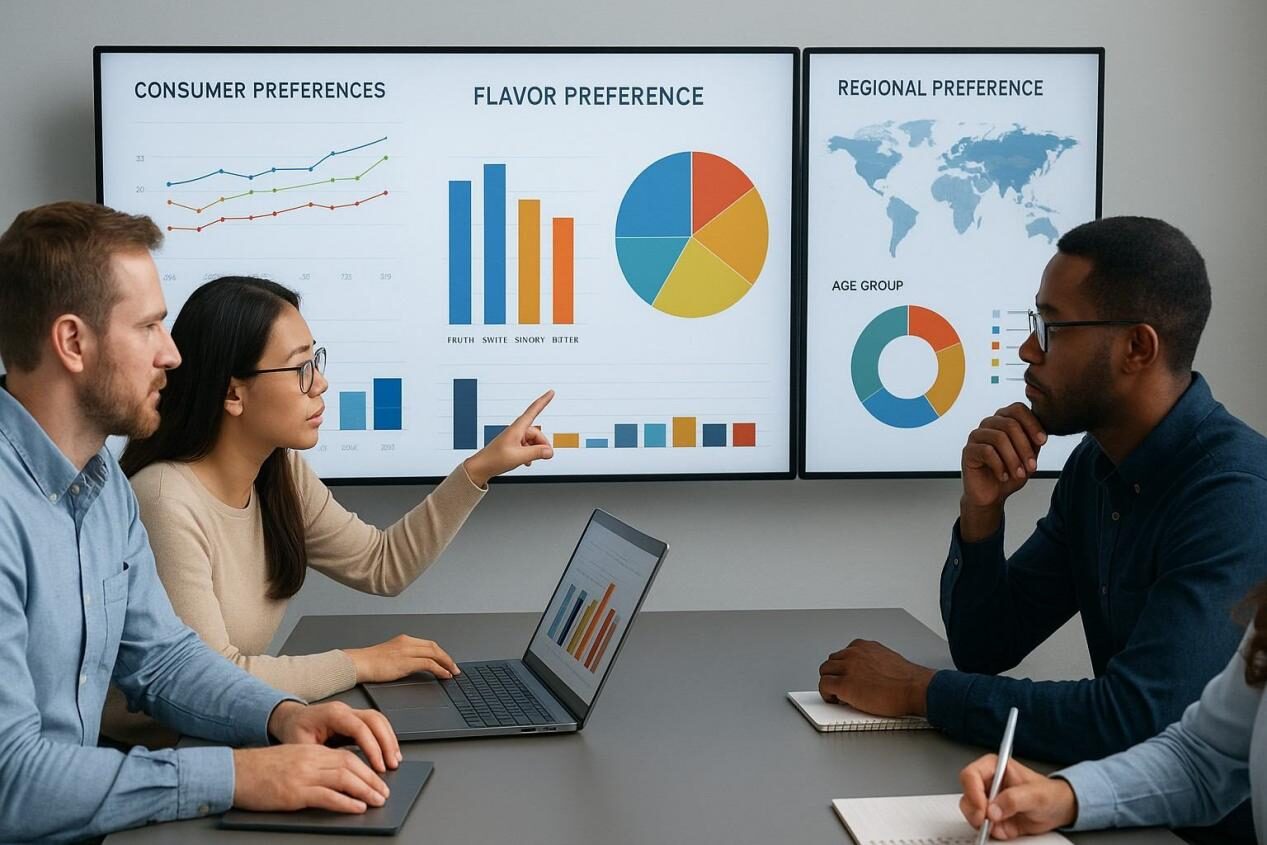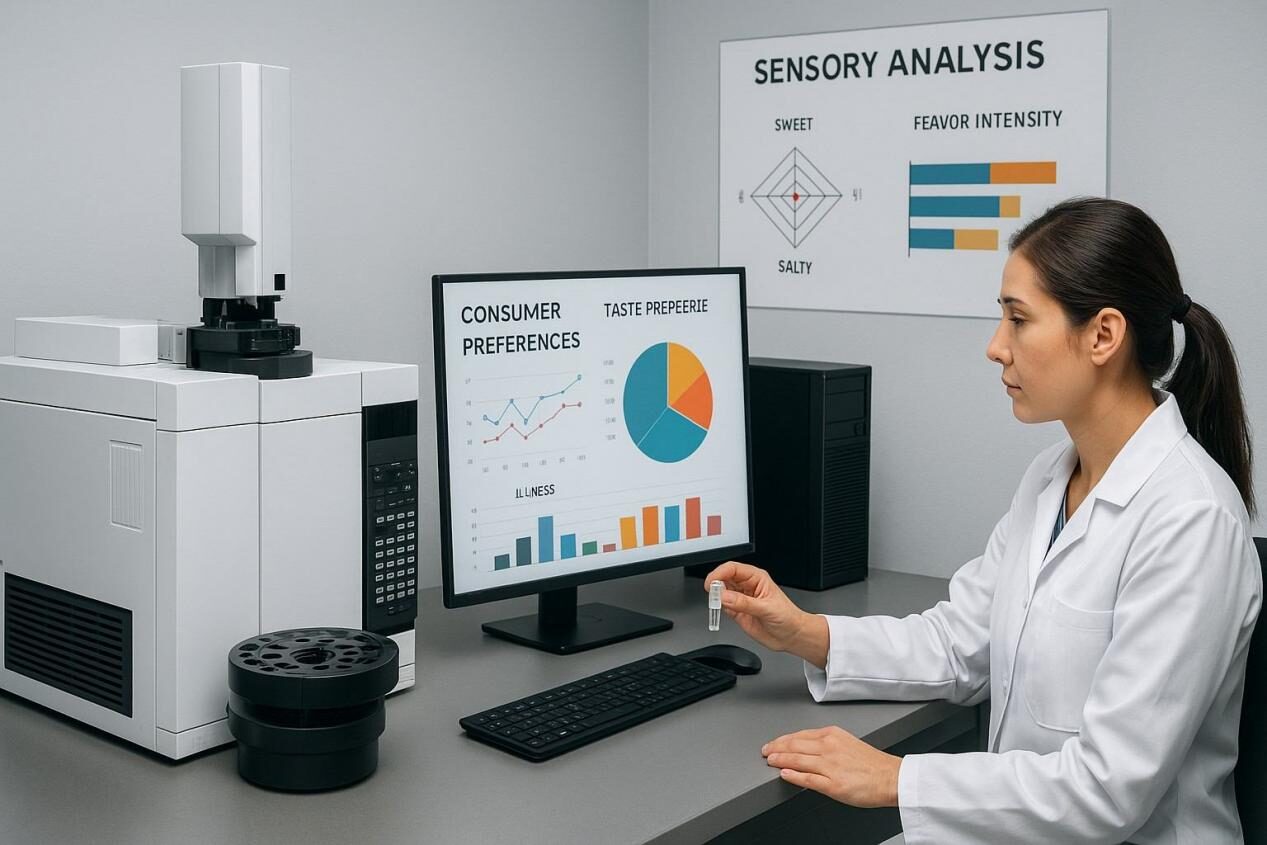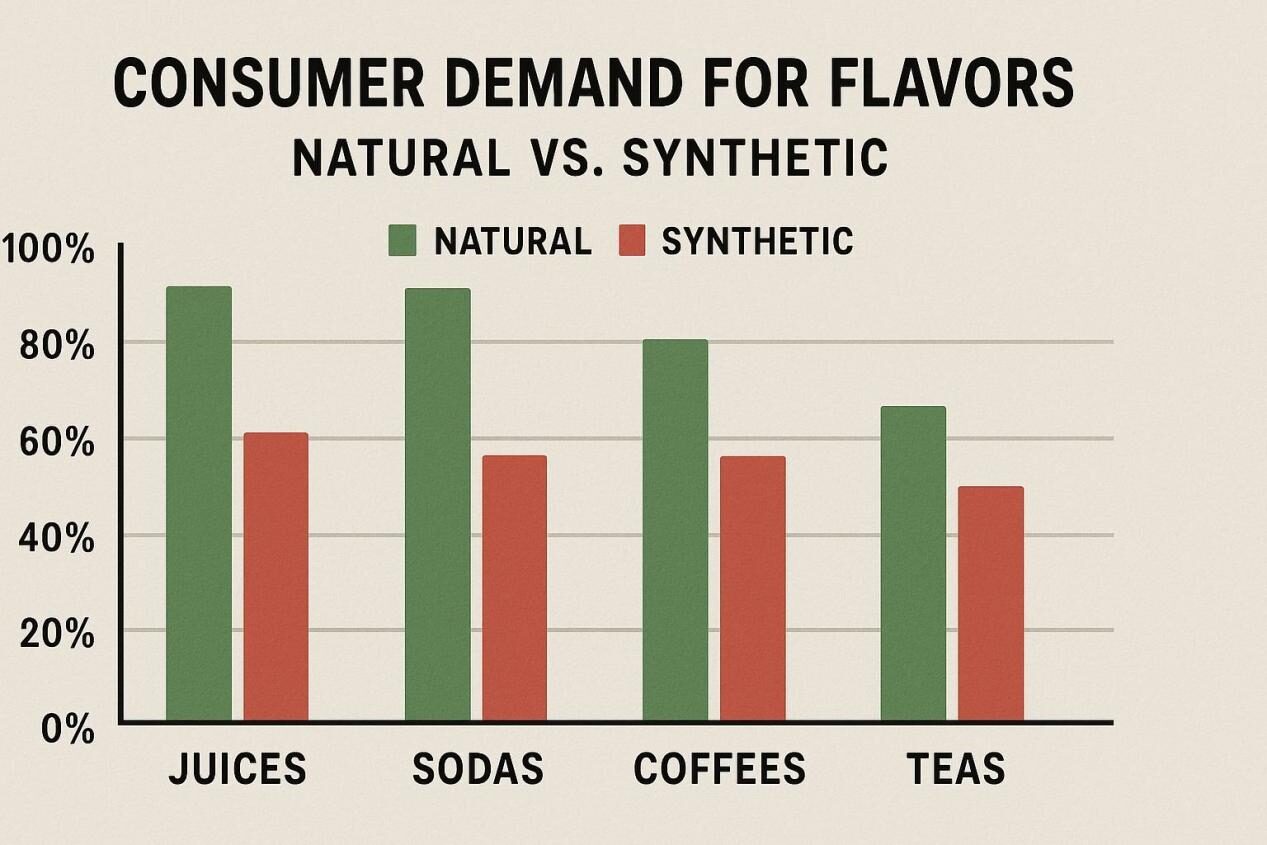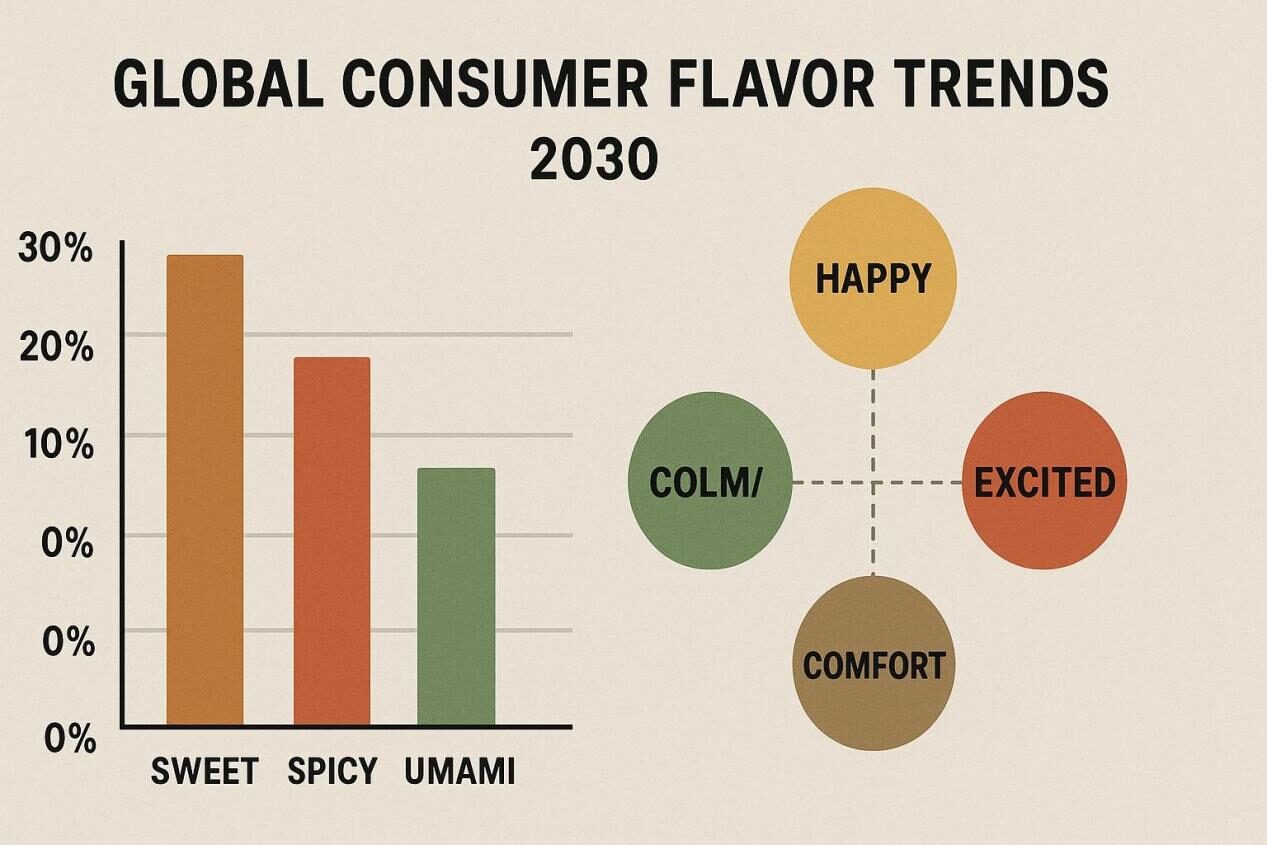Author: R&D Team, CUIGUAI Flavoring
Published by: Guangdong Unique Flavor Co., Ltd.
Last Updated: Oct 08, 2025

Team discussion to analyze taste preferences
Today’s food and beverage market is no longer driven by production capacity or marketing strength alone — it’s driven by consumer intelligence. Successful flavor innovation begins not in the lab, but in the mind of the modern shopper. Understanding why consumers choose certain tastes, how they define “authenticity” and “healthiness,” and what emotional experiences they seek is now the foundation of competitive flavor design.
According to a 2024 report by Mintel, 76% of consumers globally say flavor is the top driver of purchase in food and beverages, but more than half also expect flavors to reflect their values, such as sustainability, health consciousness, and cultural authenticity. These insights have redefined how professional flavor houses — like CUIGUAI Flavoring — develop, test, and refine modern formulations.
This article explores how consumer insights shape flavor development today, from sensory expectations to emerging trends like health-driven and emotion-inspired flavor design. It will also provide actionable frameworks and data-driven approaches that manufacturers and formulators can implement immediately.
Consumer insights are not simply “opinions.” They are structured understandings derived from behavioral data, surveys, focus groups, and digital analytics that reveal why consumers act the way they do.
For the flavor industry, this means exploring:
Research from the Institute of Food Technologists (IFT) shows that integrating consumer behavior analysis into product design can reduce new product failure rates by up to 30%. This is particularly vital in the highly competitive flavoring sector, where innovation cycles are short and consumer loyalty can shift rapidly.
Modern consumers are no longer choosing between taste and health — they expect both.
Low-sugar, plant-based, or natural-source flavors must still deliver rich sensory satisfaction.
Example: Flavors that emulate the sweetness perception of sucrose but are derived from natural ingredients such as monk fruit or stevia blends are now mainstream in beverage formulation.
Shoppers increasingly seek flavors that tell a story — traceable, regional, and “real.”
A growing number of consumers read ingredient labels closely and reject artificial additives or opaque “flavor” listings.
A 2023 McKinsey report notes that 68% of Gen Z shoppers prefer products labeled with “natural flavoring” or “authentic origin stories.” Brands that can link their flavor profiles to verifiable sources — such as “Mediterranean lemon” or “Colombian coffee” — tend to earn higher trust and repeat purchase rates.
Flavors are no longer only about nutrition; they deliver experiences.
Aromas that evoke nostalgia (“grandmother’s kitchen”), escapism (“tropical paradise”), or calmness (“lavender breeze”) are used in both beverages and functional foods.
This trend has spurred the rise of mood-based flavor categories, such as energizing, relaxing, or comforting, creating new intersections between sensory science and psychology.

Sensory analysis laboratory working scene
Sensory evaluation panels and trained tasters remain crucial. However, they are now augmented with:
These technologies quantify how aroma compounds influence perception, enabling formulators to replicate consumer-desired notes with precision.
Monitoring keywords and hashtags across platforms like TikTok, Instagram, and Reddit reveals real-time flavor interest spikes — for example, “brown butter,” “yuzu,” or “matcha vanilla” have all trended as flavor descriptors in 2025.
Advanced analytics tools (e.g., Google Trends, Brandwatch) help identify:
Since flavor preference varies globally, successful manufacturers deploy multicountry sensory testing.
For instance, the same “mango” profile may need:
This level of fine-tuning ensures that the sensory balance aligns with each target audience’s cultural flavor code.

Comparison of consumer beverage flavor demands
Health consciousness continues to redefine flavor development. Today’s “healthy” doesn’t mean bland — it means functional and flavorful.
According to Euromonitor International, global demand for botanical flavors grew by 12% annually between 2020 and 2024.
Popular infusions include:
These ingredients add both flavor depth and functional appeal, aligning with clean-label movements.
Consumer research shows that flavor perception is heavily influenced by texture and aroma intensity.
To maintain sensory richness in reduced-sugar formulations, flavorists combine:
CUIGUAI Flavoring’s R&D team, for example, employs aroma synergies that mimic sweetness through olfactory cues rather than added sugar — a method increasingly supported by sensory neuroscience research.
Flavors can support mood or mental wellness claims. For example:
These emotional signatures enhance consumer connection while positioning products as lifestyle enhancers, not just foods.
Turning consumer data into tangible flavor systems involves a collaborative process between marketing, R&D, and analytical chemistry.
Marketing teams analyze consumer datasets to identify emotion + context + preference clusters.
Example: “Urban millennials seeking guilt-free indulgence” → preference for low-calorie dessert flavors.
R&D teams benchmark target sensations through sensory mapping and GC–MS aroma libraries.
For instance, to recreate a “fresh strawberry milkshake” experience, the chemical profile may blend:
Multistage testing ensures both scientific accuracy and emotional resonance:
Feedback loops from local taste tests enable fine-tuning for different markets, ensuring each final flavor mirrors local consumer insight data.
Digitalization allows flavor creators to integrate consumer data faster and more intelligently.
Machine learning models trained on sensory databases can predict how a given compound blend will taste or smell.
According to a 2023 Nature Food publication, AI-based sensory prediction reduces formulation time by up to 40%.
Remote flavor evaluation platforms allow hundreds of consumers across countries to taste and rate prototype samples using calibrated scales, creating statistically robust datasets for decision-making.
IoT-based systems enable precise control of blending and microencapsulation parameters, ensuring that consumer-preferred aroma notes are reproduced consistently at industrial scale.

Global Consumer Taste Trends 2030
As we look toward 2030, flavor development will likely merge even more tightly with consumer emotion analytics and sustainability narratives.
Consumers want to know where their flavors come from. Transparent sourcing, traceable natural extracts, and carbon-neutral production will become key differentiators.
Next-generation consumers value immersive sensory design — combining taste, aroma, color, and even sound for experiential marketing.
Example: Interactive packaging that emits aroma upon opening or digital content that matches flavor themes.
Wearable biosensors and AI recommendation engines may soon tailor flavor intensity or sweetness level to individual biological feedback, offering hyper-personalized flavor experiences.
Leveraging consumer insights is no longer optional — it’s the foundation of every successful flavor.
From data analytics to sensory chemistry, every stage of development must reflect the voice of the customer while maintaining scientific rigor and creative flexibility.
Professional flavor manufacturers like CUIGUAI Flavoring are pioneering this integration — combining advanced analytical tools, global taste research, and sustainable sourcing to deliver innovative flavors that align with today’s market and tomorrow’s expectations.
If your R&D or product development team is exploring new directions in flavor innovation, contact CUIGUAI Flavoring today.
Our specialists offer technical exchange sessions, custom formulation design, and free flavor sample requests to help you develop market-leading food and beverage products.
📩 [info@cuiguai.com]
📞 [+86 189 2926 7983]
🌐 Explore more at 【www.cuiguai.cn】
Copyright © 2025 Guangdong Unique Flavor Co., Ltd. All Rights Reserved.